Electrophoresis
In the world of dentistry, having the right accessories is beyond essential. From precise tools to specialized equipment, dental accessories play a crucial role in providing top-quality care to patients. At Kalstein, we understand the significance of having reliable dental accessories that cater to the diverse needs of dental professionals. Our range includes everything from dental handpieces and ultrasonic scalers to curing lights and intraoral cameras. Designed to meet the highest standards of quality and precision, our dental accessories ensure efficiency and accuracy in every procedure.
Whether you are setting up a new dental practice or looking to upgrade your existing equipment, Kalstein has you covered with a wide selection of top-notch dental accessories. Our products not only deliver exceptional performance but also prioritize durability and user comfort. Discover the perfect accessories to complement your dental practice and elevate the level of care you provide to your patients.
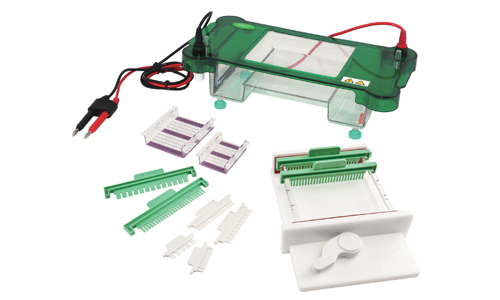
Types of Electrophoresis Your Laboratory may need
Horizontales
In the realm of Electrophoresis, the subcategory of Horizontales plays a crucial role in separating molecules based on their size and charge. Horizontal electrophoresis systems are designed to run DNA, RNA, and protein samples across a gel matrix in a horizontal orientation, allowing for efficient separation and analysis. These systems are commonly used in research laboratories, diagnostic centers, and educational institutions to study genetic variations, identify biomarkers, and unravel complex biological processes.
With user-friendly features such as adjustable parameters, easy sample loading, and rapid run times, horizontal electrophoresis units offer reliability and precision in molecular analysis. Researchers and scientists rely on these systems to generate accurate results for a variety of applications, ranging from paternity testing to drug development. Choosing the right horizontal electrophoresis system is essential for optimizing laboratory workflows and achieving consistent, high-quality outcomes in molecular biology studies.

Verticales
Verticales, within the realm of Electroforesis, encompass a diverse array of techniques used to separate and analyze biomolecules based on their size, shape, and charge. These methods are particularly crucial in molecular biology and biochemistry research, providing valuable insights into DNA, RNA, proteins, and other cellular components. Verticales techniques include Isoelectric Focusing (IEF), Capillary Zone Electrophoresis (CZE), and Gradient Gel Electrophoresis, each offering unique advantages and applications. Researchers rely on these precise separation methods to study genetic variations, protein purity, and molecular interactions, propelling advancements in fields such as pharmaceuticals, forensics, and medical diagnostics. As laboratories seek to optimize their Electroforesis workflows, understanding the nuances of Verticales subcategory becomes indispensable for achieving accurate and reproducible results.
Mastering the intricacies of Verticales techniques demands both theoretical knowledge and practical skills, as researchers must navigate complex instrumentation and experimental protocols with precision. By exploring the underlying principles of Electroforesis and delving into the specifics of Verticales methodologies, scientists can enhance their analytical capabilities and streamline their lab processes. As technology continues to evolve, staying abreast of the latest advancements in Verticales becomes essential for driving scientific discoveries and innovations. Laboratories around the world rely on the insights gleaned from Verticales analyses to unravel biological mysteries and push the boundaries of research, paving the way for groundbreaking developments in biotechnology and beyond.

ELECTROPHORESIS KALSTEIN
At Kalstein you can find the ideal Electrophoresis for Your Laboratory

Cellulose Acetate Membrane Horizontal Electrophoresis YR03423
With a cooling device, which can make the electrophoresis process under constant temperature; You can adjusting the positi...

Vertical Electrophoresis Tank YR03433
Vertical gel electrophoresis is a more complex set-up compared to horizontal gel system. Researchers normally use this system to separate proteins instead of nucle...

Mini-Protean Vertical Electrophoresis Cell YR03427
Vertical gel electrophoresis is a more complex set-up compared to horizontal gel system. Researchers normally use this system to separate proteins instead of nucle...

Mini-Protean Vertical Electrophoresis Cell YR03426
Vertical gel electrophoresis is a more complex set-up compared to horizontal gel system. Researchers normally use this system to separate proteins instead of nucle...
Our Electrophoresis best seller
Vertical gel electrophoresis is a more complex set-up compared to horizontal gel system. Researchers normally use this system to separate proteins instead of nucleic acids. However, before you separate proteins, you need to disrupt the quaternary structure of proteins into the linear strand
Characteristic Features:
Intended for protein purification and analysis, ideal for the dimensional electrophoresis, DGGE and preparative gel electrophoresis.
Equipped with special processing technology aluminums plates, effectively guaranteed the heat dissipation more even, holding stable pH during electrophoresis running.
Non-proliferation electric field influence, guaranteed the electrophoresis strip more clear and straight. Modular double hinged core cassettes, matched with the basing gel caster, ensuring the whole operation process more convenient.
Retractable connectors compatible with most major power supplies.
For the temperature control, YR03432 can be connected with a outer constant temperature circulator.
Safe operation design, power can be cut off automatically when remove the lid.
| Model | YR03432 |
| Gel Size(W×L)mm | 173×195 |
| Gel thickness | 1,1.5(mm) |
| Comb wells | 21, 35 |
| Gel capacity | 2 |
| Buffer requirement | 2200(ml) |

Analysis of the best Electrophoresis for Your Laboratory

Electrophoresis chamber
The electrophoresis chamber is the device where the sample is introduced for said process; and where the electromagnetic field that is formed in the electrophoresis process is created, said field takes place within...

Electrophoresis Applications
Electrophoresis is a laboratory technique in which a controlled electric current is used in order to separate biomolecules according to their size and electric charge through a porous matrix. Among the ma...

Fundamentals of electrophoresis
Electrophoresis consists of a technique that allows the separation of biomolecules according to their mobility and nature in an electric field on a porous matrix, it is one of the most widely used molecular biolo...

What are the principles of electrophoresis?
This technique is widely used in laboratories, especially in those of molecular biology, because it is used in important procedures such as: separatio...
Catalog of models of Electrophoresis on offer
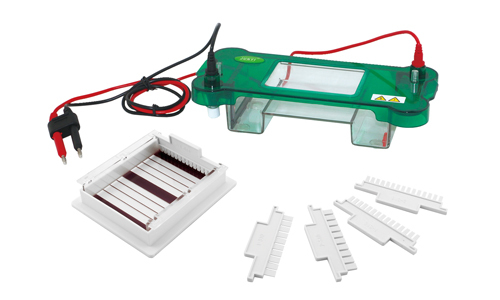
Horizontal Electrophoresis YR03416
Add to cart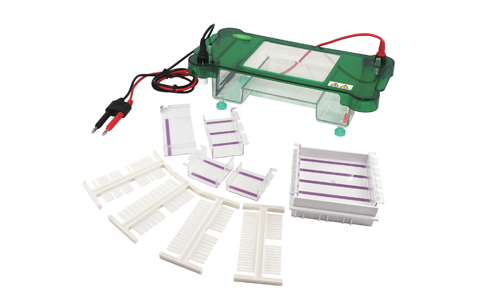
Horizontal Electrophoresis YR03417
Add to cart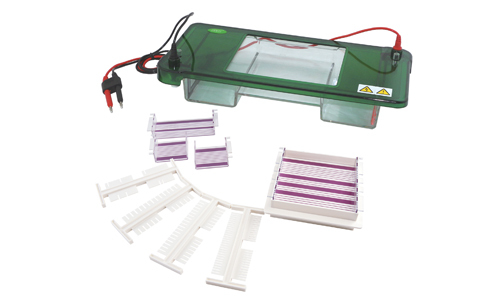
Horizontal Electrophoresis YR03418
Add to cart
Horizontal Electrophoresis YR03420
Add to cart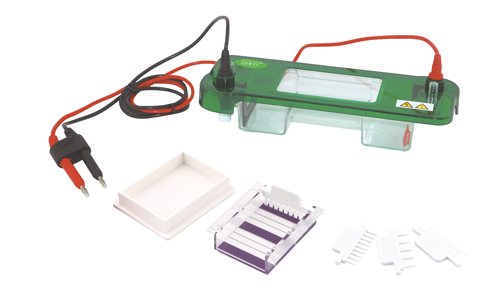
Horizontal Electrophoresis Cell YR03415
Add to cart
Cellulose Acetate Membrane Horizontal Electrophoresis YR03423
Add to cart
Mini-Protean Vertical Electrophoresis Cell YR03425
Add to cart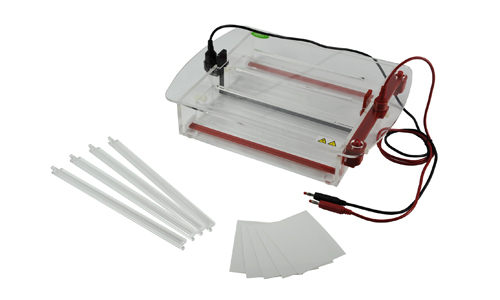
Cellulose Acetate Membrane Horizontal Electrophoresis YR03424
Add to cart
KALSTEIN UPDATED
Guidelines for you to become an expert in Electrophoresis
The Electrophoresis equipment are essential products in Your Laboratory, we provide you with guidance and recommendations for a better use, so you can work like an expert.
Electrophoresis: what are the necessary reagents?
Electrophoresis: What is it? and What is it used for?
What are the advantages of Electrophoresis in Food?
Horizontal and vertical electrophoresis: molecular weight

Frequently asked questions from our customers about Electrophoresis
The delivery time of your Kalstein product will depend on the following:
- Whether the equipment you are interested in is in stock or if it needs to be manufactured.
- The type of freight you have chosen, which can be either air or sea.
- Equipment in stock:
– Delivery Time (Air): 15-30 days.
– Delivery Time (Sea): 45-60 days.
- Equipment not in stock:
– Delivery Time (Air): 30-60 days.
– Delivery Time (Sea): 60-90 days.
You can make your purchase through:
- By email: [email protected]
- By phone: +33 (0) 1 70 39 26 50
- Online shopping: Through the official Kalstein website in your country.
At Kalstein, we provide our customers with inductions and technical support through new online methods. You can visit our induction videos, technical assistance, and guidance provided by a Kalstein team through our Youtube channel (Kalstein English). HERE
Send us a direct message and one of our agents will contact you
Electrophoresis
Lorem ipsum dolor sit amet, consectetur adipiscing elit. Sed dignissim placerat mauris cursus laoreet. Nam feugiat lacus ex, at fermentum sapien accumsan nec. Curabitur auctor porttitor mi non malesuada. Aenean condimentum, purus vitae rhoncus imperdiet, justo eros aliquam ipsum, at egestas leo diam eget libero.

Catalog of models of Electrophoresis on offer.
-

Electric Heating Drying Oven YR06446
-

Electric Heating Drying Oven YR05259-2
-

Electric heating drying oven YR05248 // YR05255
This product has multiple variants. The options may be chosen on the product page -

Electric heating drying oven YR05244 // YR05247
This product has multiple variants. The options may be chosen on the product page -

Mini Centrifuge With Large Capacity YR012G
-

Tabletop High Speed Centrifuge YR0137-2 – YR0137-3
This product has multiple variants. The options may be chosen on the product page -

Gel Card Centrifuge YR142-3 – YR142-3-1
This product has multiple variants. The options may be chosen on the product page -

Tabletop High Speed Centrifuge YR019-TG
This product has multiple variants. The options may be chosen on the product page -

Intelligent Electric Wheelchair YR06432
-

Electric Wheelchair YR05445
-

Electric Wheelchair YR05443
-

Electric Wheelchair YR05442
-

Electric Wheelchair YR05444
-

Electric Wheelchair YR05441
-

Electric Wheelchair YR05440
-

Electric Wheelchair YR05439
Descubre más de nuestro catálogo
Tipos de Electrophoresis

[Producto] A
Lorem ipsum dolor sit amet, consectetur adipiscing elit. Ut elit tellus, luctus nec ullamcorper mattis, pulvinar dapibus leo.

[Producto] B
Lorem ipsum dolor sit amet, consectetur adipiscing elit. Ut elit tellus, luctus nec ullamcorper mattis, pulvinar dapibus leo.
Find out more about Electrophoresis with our guides.
Water Distillation Technology to Ensure Reliable Results in the Laboratory
In any laboratory, the quality of the water used is crucial to guarantee the accuracy and reliability of results. Distilled...
Veterinary Magnetic Resonance Imaging: High-Precision Images for Complex Animal Diagnoses
Magnetic resonance imaging (MRI) has revolutionized medical diagnostics in humans, and today, this advanced technology is also available for veterinary...
Efficient Water Distillers: Solutions for Obtaining Ultra-Pure Water in Scientific Applications
In modern laboratories, the quality of the water used in experiments and analyses is crucial to ensure reliable results. Water...



